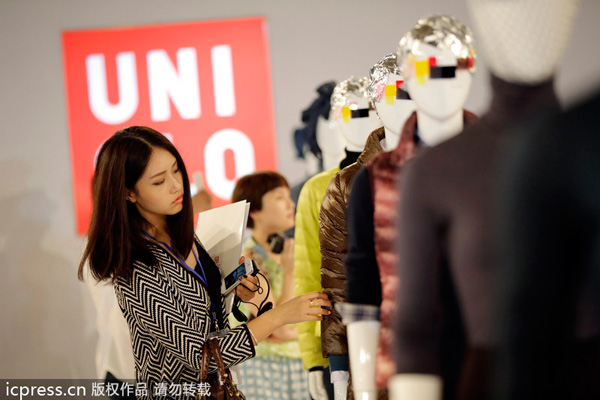

International fast-fashion brands are shifting their business focus in China from tier-one cities to second and third-tier cities, a report showed.
 |
|
A journalist looks at the latest collection of Uniqlo brands during a press conference in Shanghai, China, Wednesday, Aug. 28, 2013. [Photo/icpress.cn] |
Over the past decade, FFBs have been expanding rapidly and have become more aggressive since 2012.
According to CBRE, a leading real estate services adviser, store numbers for the four major FFBs, UNIQLO, ZARA, H&M and C&A, reached 523 by June 2013. Of these, 40 percent were opened in the past 18 months.
In terms of store numbers, China has already become the most important international market for major FFBs – the largest international market for ZARA and UNIQLO, and largest Asian market for H&M and C&A.
With their branding characterized as having the appeal of "quick trend adoptability, fashionable design, reasonable price labeling, high quality and limited edition product lines", FFBs have gained increasing popularity among Chinese consumers, in particular the younger generation.
CBRE research showed that by June 2013, the total number of stores for the four key FFB brands reached 523. Of these, 35.4 percent are located in tier-1 cities, a drop of 5.8 percentage points compared to December 2011. In contrast, the proportion of stores in tier-2 and tier-3 cities expanded by 1.9 and 3.9 percentage points to 36.7 percent and 27.9 percent, respectively.
The number of stores in tier-2 cities overtook those in tier-1 cities in June.
Provincial capital cities (excluding tier-1 cities) are the focus for new store openings, the report showed.
Tier-2 cities have become the new key battlefield for international FFBs. Over the past 18 months, international FFBs opened 207 new stores in China and around 40 percent are located in tier-2 cities. The proportion for tier-1 cities declined to 26.6 percent, with the remaining 33.8 percent coming from tier 3 cities.